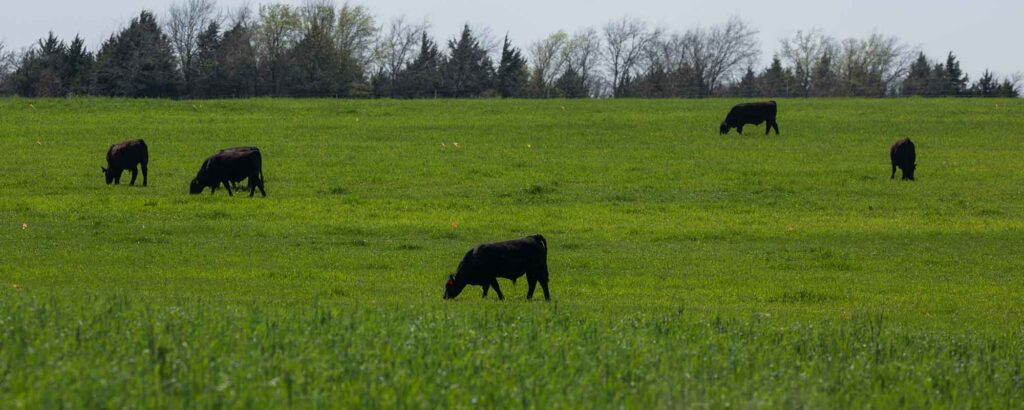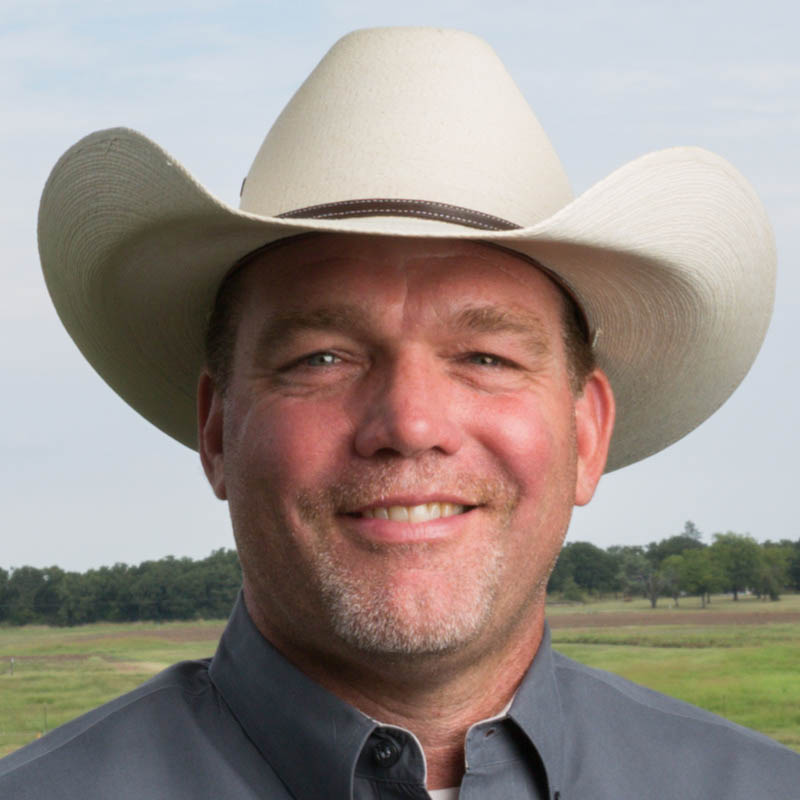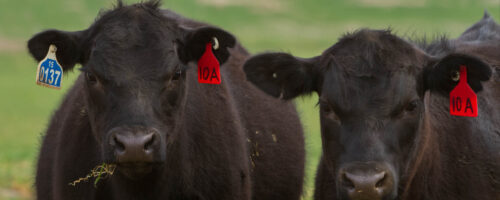All Beef is Grass-fed
Evan Whitley, Ph.D., reviews the difference between grain-finished and grass-finished beef to help consumers better understand the labels they find in their local grocery stores.
Walk up to the beef case in your local grocery store, and you are sure to find a variety of labels calling out to you: “I’m the best choice for your family!” “No, I am the one you want!” If we’re going to sell beef, we have to market it. Right? Well, in the marketing process, the reality of products and how they compare to one another often gets lost.
One of the meat labels we frequently see is “grass-fed.” In reality, all beef comes from cattle that are grass-fed. All cattle eat grass the majority of their lives. Here, we illustrate the main difference between the two production systems: what cattle eat to put on those final pounds during what’s called the “finishing” period.

Why do we need both grain-finished and grass-finished beef?
Choice is good for both producers and consumers. Finishing on grain uses less land, water and fossil fuel resources compared to grass-fed systems, according to research by Judith Capper at Washington State University. Grain-finishing also allows us to produce more beef. It typically takes longer to raise a grass-finished calf ready for harvest compared to a grain-finished calf, and often grass-finished cattle do not yield as much beef. Plus, most grass resources aren’t conducive to finishing cattle. We simply don’t have enough land to produce the same amount of beef on grass alone. These efficiency losses are partially why grass-finished beef is more expensive.
Closer to the dinner plate, beef from grain-finished cattle achieves the marbling (streaks of fat) most Americans associate with a high-end steak. Less marbling may mean some advantages in leanness, but all beef (including grain-finished) offers 29 lean cuts of meat.
Bottom line: With facts in hand, you can feel good about any choice you make when it comes to food. The Noble Research Institute’s research is focused on improving land stewardship, which includes enhancing efficiency in beef production regardless of marketing claims at the grocery store. There is no one-size-fits-all production system when it comes to sustainability, and farmers and ranchers must be able to determine what best fits their land and operation. You, too, must determine what best fits your family, so don’t be afraid to ask questions of producers and other experts when it comes to understanding a label.



Comment